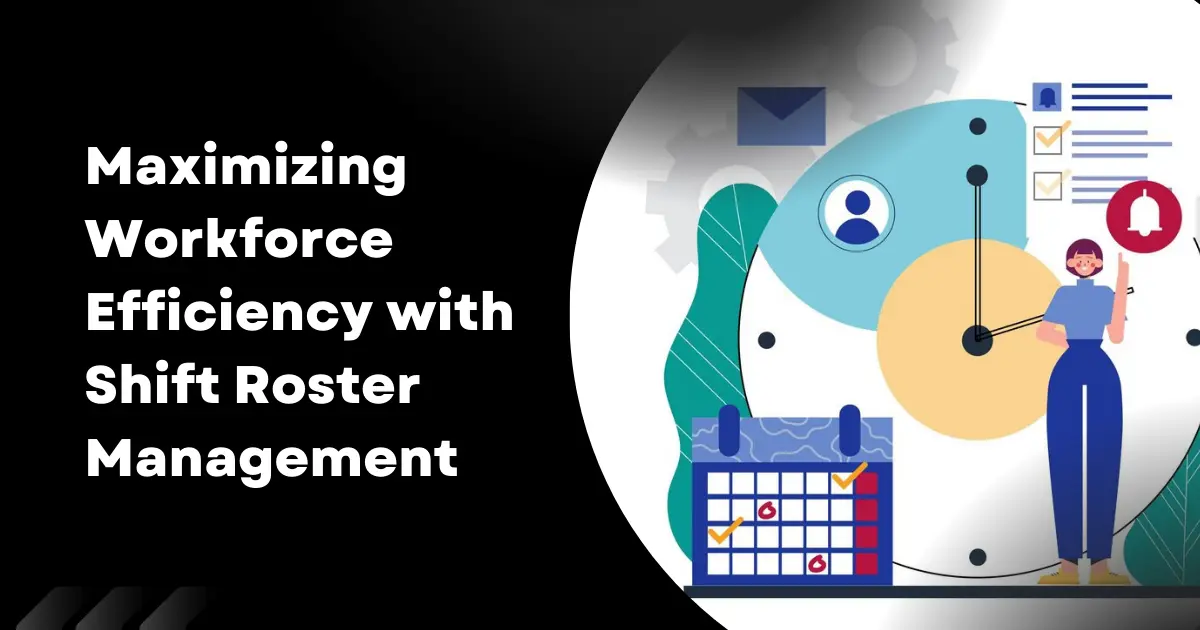
Overview
Managing employee shifts is crucial for businesses that run on shift-based schedules, such as manufacturing, healthcare, and retail. An automated shift roster management system can simplify the complexities of managing employee schedules, reduce administrative workloads, and ensure seamless operations.
In this blog, we'll dive into what shift roster management is, why it's essential for businesses, how it works, and the benefits it brings to both employees and employers.
What is Shift Roster Management?
Shift roster management refers to the process of scheduling and managing employee shifts in an organized manner. It ensures that the right people are working at the right times, considering the company's operational requirements, employee availability, and compliance with labor laws.
By using an employee shift management system, businesses can automate the entire process, eliminating manual errors and improving accuracy.
Why Shift Roster Management Matters
Shift roster management is critical for businesses that rely on employees working different shifts throughout the day and night. Poor shift planning can lead to:
- Staffing shortages or overstaffing
- Increased payroll costs due to overtime
- Employee dissatisfaction and burnout
- Operational disruptions and reduced productivity
A well-managed shift roster improves employee satisfaction, ensures adequate staffing levels, and keeps operations running smoothly.
Discover how shift roster automation can benefit your workforce. Book a demo now!
How Does Shift Roster Management Work?
An automated shift roster management system allows businesses to easily assign shifts, monitor attendance, and adjust schedules based on demand. Key features include:
- Automated Shift Scheduling: Assign shifts based on employee availability and company needs.
- Real-Time Attendance Tracking: Integrates with real-time attendance tracking systems to monitor clock-ins and clock-outs.
- Leave and Absence Management: Syncs with the leave management system to account for employee absences.
- Overtime Monitoring: Keeps track of employee overtime to ensure accurate payroll calculations. Learn more about overtime monitoring.
- Geofencing: Tracks employee attendance based on their location using geofencing attendance technology.
Benefits of Automating Shift Roster Management
1. Streamlined Scheduling
Automating shift scheduling reduces the time and effort HR managers spend manually planning rosters. With a shift management system, HR teams can easily create, adjust, and share work schedules. This tool helps ensure that everyone knows their shifts and can quickly make changes if needed.
2. Enhanced Employee Satisfaction
Employees benefit from transparent shift schedules and the ability to request shift changes or time off through a self-service portal. This helps create a positive work atmosphere and boosts employee morale. The employee management system helps employees access their shift information, improving communication and engagement.
3. Real-Time Tracking and Reporting
With real-time attendance dashboards, managers can view who is clocked in, absent, or late, allowing them to make adjustments in real-time to avoid staffing issues. This leads to better workforce management and higher operational efficiency.
Want to enhance workforce management? Book a demo today!
4. Improved Compliance
By automating your shift roster, you can ensure compliance with labor laws, such as limiting overtime and providing employees with proper rest periods. Compliance with regulations is simplified, reducing the risk of penalties or legal issues. HR compliance management also becomes easier when shifts are managed properly.
5. Data-Driven Decisions
Automated systems provide valuable data insights through comprehensive reporting, allowing businesses to analyze workforce patterns, identify bottlenecks, and optimize shift management.
Tips for Effective Shift Roster Management
1. Understand Your Workforce Needs
Identify peak business hours and employee availability to avoid under or overstaffing. Automating the process helps by analyzing historical data and employee preferences.
2. Use an Integrated System
Ensure your shift roster system integrates seamlessly with payroll, leave management, and attendance tracking to avoid discrepancies and ensure smooth operations.
3. Plan for Flexibility
Allow employees to swap shifts or request time off easily through the system. Offering flexibility improves job satisfaction and prevents burnout.
4. Monitor Overtime
Keep track of overtime with overtime leave calculations to ensure you're not overspending on payroll. Set clear guidelines on when overtime is allowed.
5. Provide Transparent Communication
Ensure that employees have access to their schedules and can communicate any issues through the system. An effective employee directory helps facilitate this communication.
Quick Summary
Shift roster management is essential for businesses with complex workforce scheduling needs. By automating the process, companies can improve efficiency, employee satisfaction, and compliance. Using GetBiz Solutions’ HRMS Software, businesses can easily manage shifts, monitor attendance, and streamline operations, reducing the burden on HR teams and enhancing productivity.
Frequently Asked Questions
How does shift roster management improve employee productivity?
Can the shift roster system integrate with other HR functions?
What features should I look for in a shift roster management system?
How does shift roster automation help with compliance?
Can employees request shift changes through the system?


